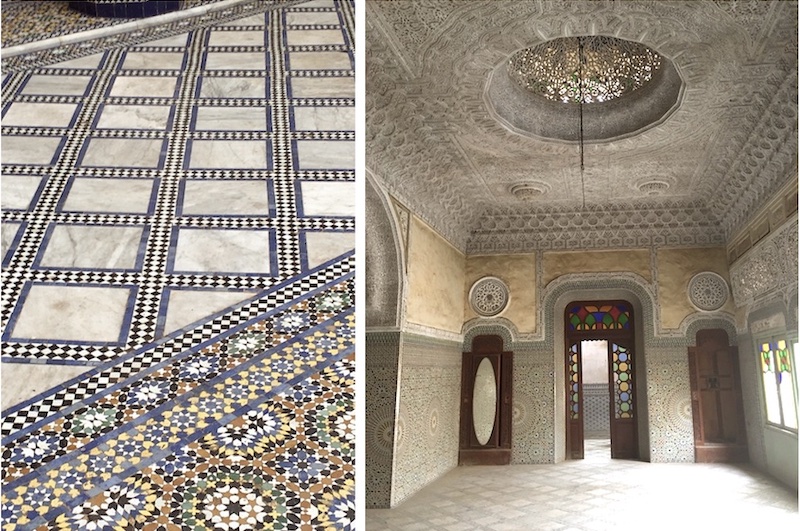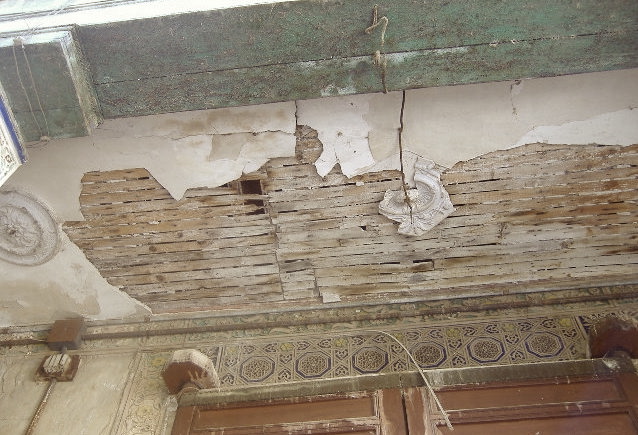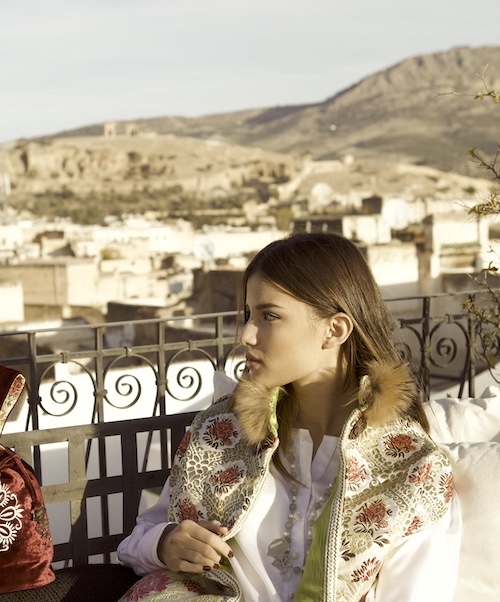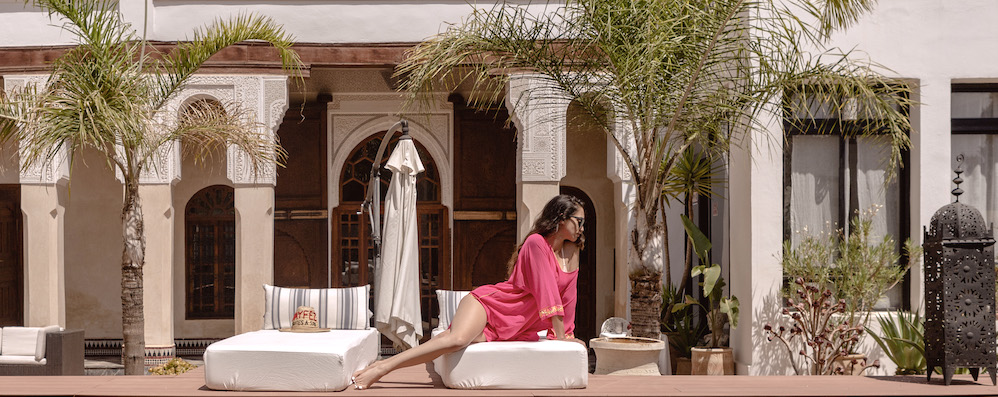A riad is a quiet, beautiful, and peaceful jewel in the middle of the bustle of Morocco’s medinas.
The most famous medina: Marrakech. The smallest: that of Rabat, overlooking the Atlantic. The forgotten one: that of Casablanca. And all the others: Tangier, Essaouira and many more. But the largest and only one listed as UNESCO World Heritage Site, is the medina of Fez.
The city of Fez has radiated all over Morocco and the Arab world. At the height of its influence, the wealthy and the powerful started building the most sumptuous Palaces and Riads of Morocco.
DAR, RIAD, OR PALACE
The word “riad” has been misused for many years. Yet, 90% of the estates that call themselves «riad» are actually «dars».
In fact, “riad” is meant to be a generic term describing a Moorish or Arab-Andalusian building. Yet this definition is a simplified vision of Moroccan architecture as Riads, properly speaking, are actually quite uncommon.
What is exactly a Riad?
In Arabic, riad means «garden». Therefore, it can be defined as a house with a spacious garden, traditionally, planted with fruit trees. In addition, riads are necessarily decorated with a fountain meant for watering the garden.
This explains why the Tazi family, formerly owner of Mayfez, referred to it as «the farm». Moreover, as the term “farm” implies, riad houses are rather sober, which means you will not find carved or richly painted ceilings in a riad.
Ultimately, a riad does not have four built wings, but only three, positioned in U-shape around the garden.
What is a « Dar »?
“Dars” consist of four wings built around a central patio. The patio is at the core of the house. Its size and opulence are sign of its owner’s social status.
Most riads and palaces were once decorated with small and modest «dar» where the servants used to live. For instance, at Riad Mayfez, the nowadays Spa, once used to be home of the “favorites”. Another one of the servants’ dar is currently under refurbishment and will soon become a family suite on two floors.
Palaces, the ultimate expression of moorish arts
They offer both large space and architectural splendour.
When visiting a palace you will be blessed to admiring the best of traditional Moroccan art craft: mosaics (called “zellige”), sculpted plaster and cedar.
Palaces also display a great panel of Moroccan architecture orchard or landscaped garden, several patios, just as many housing wings, and often a dedicated harem.

Death and resurrection of riad
Long disregarded by their legitimate heirs, many riads and palaces are still inhabited or squatted by poor distant relatives.
Yet in the 70’s, dars, riads and palaces entered a new golden age under the influence of personalities such as Yves Saint Laurent. New inhabitants, mainly Europeans, started moving back into the medinas, first in Marrakech and later on in other cities.
Since then, the craze keeps on. Hence the refurbishment of thousands of more or less pretigious dars, for the purposes of personal housing or hotels – “Riads”.
THE RIAD STYLE
There is no strictly speaking riad style.
Interior design in riads is varied and depends on period and owners.
Riad life in the 19th and 20th century
End of the 19th and beginning of the 20th century, many wealthy families from Fez were under the influence of the English and French “art de vivre”.
Taking advantage of the orientalism movement occurring in Europe and looking for business opportunities, Moroccan manufacturers began travelling extensively. Bringing back presents and souvenirs for their family and loved once, the best of European creations soon found their place in traditional Moroccan riads and palaces.
Silverware from Wright, crystal from Saint Louis and fine Wedgwood or Limoge porcelain, soon became a must have for any wealthy family.
From then on, any elegant traditional Moroccan tea tray had to be fitted with an English silver teapot and a set of colourful Saint Louis crystal tea glasses, while the Moroccan savouries were nicely placed on thinly painted Chinese porcelain plates.
Simultaneously, the management of riads and palaces started professionalising and Europeanizing.
Butlers and nannies were hired from France or England. Housed on site, these “expats” used to benefit from private adjancent “dars” more spacious than those shared by the rest of the servants.
Riad design nowadays
Today, most of riad owners have made the decision to choose a more contemporary style, less expensive in refurbishment costs and certainly more in line with the guests’ expectations.
Others went for crips austere design where decoration is reduced to minimum. Most of them you will find in Marrakech.
However, some palaces, such as the Royal Mansour in Marrakech, still perpetuate the tradition of the former “art de vivre” inherited from last century.
Yet in Fez, most of the riads remain very traditional decorated with colourful zelliges, heavy fabrics, chandeliers, and plenty of colourful carpets.
RIAD MAYFEZ ONCE TAZI RIAD
The Riad Tazi, belongs to the rare category of riads in the stricktest sense.
As such, Mayfez is an estate of 1500m2 housing space and 1500m2 orchard, which is huge considering that it is located in the center of the city walls.
Restoration of Riad Mayfez
The Tazi riad – which became Mayfez – was formerly known as «arsa», meaning the farm.
Owned by the wife of the Vizier of Tangier, mother to Pasha Tazi of Fez, and to the Sultan’s prime advisor, the Tazi riad was home to a strong tempered and powerful lady. Yet, after her death, riad Tazi became a Laraqui property, because of inheritance disputes, in the 50’s.
Mayfez contrasts with other riads by its architecture.
Indeed, it is probably the only riad in whole Morocco featuring an authentic Art Deco “colonial style” villa. So much unlikely, that we had to fight with the Historical Heritage Preservation Commission. In fact, they required the villa to be brought down.
Simultaneously, although most of the ceilings displayed traditional cedar beams, some of them were fitted with carved ceiling Therefore, it can be assumed that the Tazi’s were a very open-minded family. They cared for modern comfort and European design was a sign of refinement.

In the garden, a large patio in simple blue and white “zelliges” was fitted with an Italian Carrara marble fountain. It was surrounded by an orchad. Unfortunately, nothing remains.
In fact, the carnage carried out by the builders during the restoration work have put an end to the centuries-old fig, orange and olive trees… But this is another story…
My life in a riad
I have been totally besotted by this riad since the first time I stepped in. The path has been long, chaotic and often painful until the original riad was finally transformed into Riad Mayfez.
Nevertheless, I do not regret anything, and I thank my husband who followed me and supported me in this crazy project.
I wanted Mayfez to combine traditional Moroccan craftsmanship and that luxurious “art de vivre”, formerly found in the palaces of yesteryears and that European travellers are nowadays looking for.
Mayfez is an oasis of calm, much needed after a few hours in the intense hustle and bustle of Fez’s tiny streets. It is a welcome retreat where birds sing, fountains trickle and palm trees rustle in the wind.
Spend an evening sipping cocktails and snacking on olives while the pink sun sets across the seemingly endless flat rooftops of the city, the peace only punctuated with the calls to prayer from the three hundred surrounding mosques, whose towers light up as night falls. A true magical experience.

Today, I am living my “palace life”.
Yet, I am never tired of wandering the souks. I run the other Palaces and Riads that have not had the chance to be restored. An unlucky situation that may occur either because they are too large or too expensive, because of disputes over inheritance, or because of the hazards of history.
Follow me at the discovery of the Forgotten palaces and riads of Fez.

